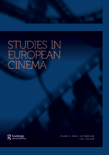
Studies in European Cinema
Scope & Guideline
Examining the Evolution of Film in Europe
Introduction
Aims and Scopes
- Interdisciplinary Approaches to Film Studies:
The journal emphasizes interdisciplinary research that merges film studies with other fields such as gender studies, cultural studies, and sociology, providing a comprehensive understanding of cinema's role in society. - Focus on European Cinemas:
It specifically examines the diverse cinematic traditions and practices across European nations, highlighting regional differences and transnational influences in filmmaking. - Critical Analysis of Contemporary Issues:
Papers often engage with contemporary themes such as migration, identity, and socio-political challenges, reflecting on how these issues are represented and navigated within European cinema. - Historical Perspectives:
The journal includes historical analyses of film movements and national cinemas, offering insights into the evolution of European cinema from its origins to modern practices. - Cinematic Aesthetics and Techniques:
A significant focus is placed on the aesthetics of film, exploring how visual and auditory elements contribute to storytelling and emotional engagement.
Trending and Emerging
- Migration and Transnational Cinema:
Recent publications increasingly explore themes of migration and identity, reflecting the current socio-political landscape in Europe, and highlighting how filmmakers address these complex narratives. - Feminist and Gender Studies:
There is a growing emphasis on feminist perspectives and gender representation in European cinema, with a trend towards examining how women's voices and experiences are portrayed and their impact on cultural narratives. - Ecocinema and Environmental Themes:
Emerging themes around ecocinema and environmental concerns are gaining traction, indicating a rising awareness among filmmakers and scholars about the ecological implications of cinema. - Digital and New Media Influences:
The impact of digital technology on filmmaking and audience engagement is increasingly explored, showcasing how contemporary practices are reshaping the cinematic landscape. - Intermediality and Cross-Genre Studies:
There is a notable trend towards intermediality, where the boundaries between different media forms are blurred, allowing for innovative explorations of narrative and form in cinema.
Declining or Waning
- Traditional Film Criticism:
There appears to be a declining focus on conventional film criticism, with fewer papers dedicated to purely evaluative reviews of films in favor of more theoretical and interdisciplinary approaches. - National Cinemas in Isolation:
Research that treats national cinemas in isolation, without considering transnational influences or collaborations, seems to be less prevalent, indicating a shift towards more interconnected analyses. - Historical Reconstruction of Silent Cinema:
While historical perspectives remain important, there is a noticeable reduction in papers focusing exclusively on silent cinema, suggesting a preference for more contemporary topics and methodologies. - Genre Studies:
The specific study of genres, particularly traditional genres like westerns or musicals, appears to be waning, with fewer papers dedicated to these classifications, as the journal shifts towards more thematic explorations. - Authorial Studies of Classic Filmmakers:
The focus on individual classic filmmakers has diminished, with less emphasis on auteur theory, as the journal embraces broader collective movements and collaborative practices in cinema.
Similar Journals

Ekphrasis-Images Cinema Theory Media
Redefining the Landscape of Cinema and Media StudiesWelcome to Ekphrasis-Images Cinema Theory Media, an academic journal dedicated to exploring the intersections of visual arts, cinema, and media studies. Published by the esteemed BABES-BOLYAI UNIVERSITY, FACULTY OF THEATRE & TELEVISION in Romania, this journal serves as a critical platform for scholars and practitioners to disseminate groundbreaking research and innovative ideas within these vibrant fields. With an ISSN of 2067-631X and an E-ISSN of 2559-2068, Ekphrasis is committed to enhancing the discourse surrounding contemporary visual culture, as evidenced by its Scopus rankings in the arts and humanities categories. Aiming to contribute to academic discussions from 2019 to 2024, it invites submissions that challenge conventional perspectives and promote new methodologies. Although currently positioned in the Q4 category for Communication and Q3 for Visual Arts and Performing Arts, the journal is poised for growth and aims to increase its impact factor through the openness of scholarly exchange and rigorous peer review. Join us in advancing the critical discourse at the crossroads of art and media!

MILLENNIUM FILM JOURNAL
Connecting Scholars and Practitioners in Film Exploration.MILLENNIUM FILM JOURNAL, published by MILLENNIUM FILM WORKSHOP INC, stands as a pivotal platform for exploration and discourse within the realm of film studies. With its ISSN 1064-5586, the journal has been noteworthy in delineating the complexities of visual arts and performing arts, contributing significantly to academic scholarship between the years 2009 to 2016, and in 2018. Though its coverage has been discontinued in Scopus, the journal has attained a respectable position within its category, ranking #320 out of 502 in the Arts and Humanities field. Researchers, professionals, and students alike are invited to engage with interdisciplinary discussions that illuminate the cultural and theoretical dimensions of cinema. While currently not offering open access options, the journal continues to serve as a vital resource for those deeply invested in the study of film, making it a respected voice in visual arts and performance research.
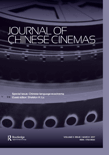
Journal of Chinese Cinemas
Unveiling the Stories Behind China's Silver ScreenThe Journal of Chinese Cinemas, published by Routledge Journals, Taylor & Francis Ltd, is a leading platform dedicated to advancing the field of film studies with a focus on cinema from China. With an ISSN of 1750-8061 and an E-ISSN of 1750-807X, this journal provides a comprehensive examination of the cultural, social, and political dynamics inherent in Chinese cinema. Ranked in the Q3 category for Communication and Q1 for Visual Arts and Performing Arts in 2023, it stands out in the academic landscape, particularly noted for its innovative research and diverse discourse. It holds a respectable position in Scopus rankings, coming in at #219 within Visual Arts and Performing Arts, indicating its growing impact among scholars and practitioners alike. With its commitment to publishing high-quality research from 2012 onwards, the journal serves as an essential resource for researchers, professionals, and students eager to deepen their understanding of the evolving landscape of Chinese cinema.

FILM QUARTERLY
Exploring the Depths of Cinematic ScholarshipFilm Quarterly, published by University of California Press, stands as a leading academic journal in the field of visual arts and performing arts, boasting a prestigious Q1 ranking in the 2023 category quartiles. Since its inception in 1969, this quarterly publication has made significant contributions to the study and critique of cinema, attracting attention for its insightful articles, cutting-edge research, and comprehensive reviews that appeal to scholars, practitioners, and students alike. With an ISSN of 0015-1386 and an E-ISSN of 1533-8630, it serves as an essential resource for those seeking to enhance their understanding of film theory, history, and analysis. Although not open access, its articles are critical for researchers navigating the complex landscape of contemporary and historical film studies, underscoring its vital role in advancing scholarship within the discipline.
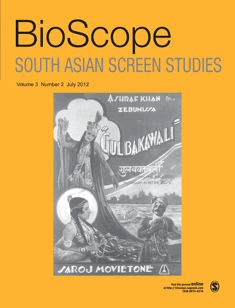
Bioscope-South Asian Screen Studies
Decoding the Cultural Narratives of the ScreenBioscope-South Asian Screen Studies is an influential journal dedicated to advancing the field of screen studies in the South Asian context, published by SAGE Publications India Pvt Ltd. With an ISSN of 0974-9276 and an E-ISSN of 0976-352X, this journal spans a convergence of scholarly research from 2010 to 2024, providing a significant platform for interdisciplinary dialogue. Holding a Q3 rating in Communication and a Q2 rating in Visual Arts and Performing Arts in the 2023 category quartiles, it ranks 212th in its field on Scopus, reflecting its vital contribution to academic discourse. Bioscope aims to explore and critically analyze the rich tapestry of South Asian cinema, media, and performance arts, offering researchers, professionals, and students a valuable resource for deepening their understanding of regional and global cinematic narratives. Readers will find insightful articles that probe the cultural, social, and political dimensions of screen studies, making this journal an essential reference for anyone engaged in the evolving landscape of South Asian visual culture.

Etica & Cine
Illuminating Ethics in Visual StorytellingEtica & Cine is a distinguished open-access journal published by the University of Buenos Aires, Faculty of Psychology, dedicated to the interdisciplinary field of ethics in cinema and visual culture. With the ISSN 2250-5660 and E-ISSN 2250-5415, this journal has been a vital platform for researchers, professionals, and students since its inception in 2011, providing a space for critical discourse surrounding the ethical dimensions of film and media. The journal aims to foster scholarly dialogue by publishing high-quality articles that explore the philosophical, social, and psychological implications of filmic representations. While the journal's H-index is yet to be established, its commitment to open access ensures that valuable insights are readily available to a global audience, thus enhancing its significance in academic and professional circles. As the conversation around ethics in cinema continues to evolve, Etica & Cine stands as an essential resource for anyone engaged in this vital area of study.
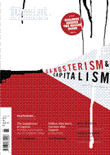
Film International
Celebrating the Intersection of Film, Culture, and Society.Film International is a prominent journal dedicated to the exploration of film and its cultural, social, and artistic significance. Published by INTELLECT LTD, this journal serves as a platform for interdisciplinary studies in the field of film criticism, theory, and scholarship, contributing valuable insights from both established and emerging researchers. With an ISSN of 1651-6826 and an E-ISSN of 2040-3801, the journal is an essential resource for those engaged in the realms of communication, cultural studies, and visual arts, though it is currently classified in the lower quartiles of these fields (Q4). Noteworthy for its critical perspectives and diverse content, Film International enhances the dialogue surrounding cinematic practices and their impact on society. Researchers, professionals, and students can explore its rich assemblage of articles and reviews that reflect the evolving landscape of film studies, making it a significant addition to the academic community focused on the art of film.

Studies in Russian and Soviet Cinema
Exploring the Rich Tapestry of Russian and Soviet FilmStudies in Russian and Soviet Cinema, published by Routledge Journals, Taylor & Francis Ltd, provides a critical forum for the exploration and analysis of cinematic practices, histories, and cultures from the Russian and Soviet eras. With its ISSN 1750-3132 and E-ISSN 1750-3140, this journal operates under the editorial guidance of leading scholars in the field, making significant contributions to the Visual Arts and Performing Arts and Communication categories, where it is ranked in the upper quartiles of its peer group. The journal spans a rich period of study, converging insights from 2006 to 2024, thereby allowing for an in-depth understanding of the evolution and impact of cinema in societal narratives. Researchers and enthusiasts alike will appreciate its dedication to illuminating the often-neglected cinematic treasures of Russia and the Soviet Union, promoting scholarly discourse through its rigorous analyses and diverse range of articles. This journal serves as an essential resource for anyone interested in the intersections of film, culture, and history.
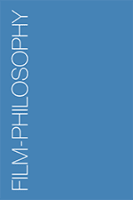
Film-Philosophy
Fostering Multidisciplinary Dialogues in Film and ThoughtFilm-Philosophy is an esteemed academic journal published by Edinburgh University Press, specializing in the intersection of film studies and philosophical discourse. Since its launch in 1998, this Open Access journal has provided a platform for scholarly debates and innovative research, allowing for free and unrestricted access to its content, which has significantly contributed to the global dialogue on visual culture. With a commendable impact illustrated by its Q1 ranking in Visual Arts and Performing Arts and Q2 in Philosophy, the journal sits within the top quartile of its field. Operating from the United Kingdom, Film-Philosophy is committed to fostering a multidisciplinary approach, inviting contributions from researchers, professionals, and students alike. By engaging with critical theories and the aesthetics of cinema, the journal stands as a vital resource for understanding the philosophical implications of film and its cultural significance.
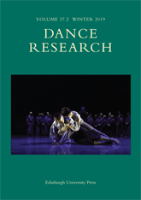
Dance Research
Celebrating Innovation in Dance ScholarshipDance Research is a prestigious academic journal published by Edinburgh University Press, dedicated to the comprehensive exploration of dance and its multifaceted interactions within the realms of visual arts and performing arts. Established in 1996, this journal has grown in prominence, achieving a Q1 ranking in the Visual Arts and Performing Arts category for 2023, signifying its influence and high-quality scholarship in the field. With an impressive Scopus ranking of #232 out of 667 in the Arts and Humanities cluster, it offers a vital platform for researchers, professionals, and students alike, facilitating critical discourse and innovative research on various aspects of dance. Although the journal currently operates under a traditional access model, its rich collection of articles often features diverse methodologies, in-depth case studies, and theoretical analyses that stimulate both academic inquiry and practical applications in dance. Dance Research is an essential resource for those looking to deepen their understanding of dance as an evolving art form, and is instrumental for advancing scholarly conversations in this vibrant field.